Publications and media
Water works in Zambia’s Copperbelt Province
The Mulonga water project in the Copperbelt Province was initiated to change lives of 530 000 people, by providing safe access to sanitation and drinking water. The project aims to improve living cond...
Published on

AFD Group and Europe in Southern Africa
The collaboration between AFD and Team Europe in Southern Africa allows us the opportunity to increase our reach, impact and visibility in the region. The EU Partnership with the AFD Group allows us a...
Published on
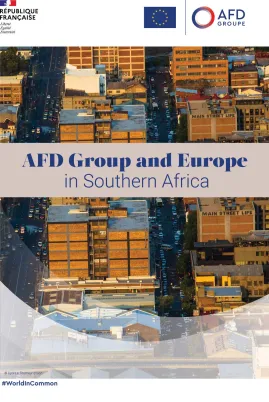
AFD Group in Southern Africa
In Southern Africa, AFD Group intervenes in ten countries: Angola, South Africa, Botswana, Eswatini, Lesotho, Namibia, Malawi, Mozambique, Zambia, and Zimbabwe. AFD Group supports the Southern Afri...
Published on
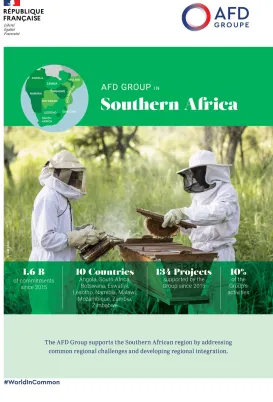
Hard Times for Developing Countries: Africa’s Financing Needs in Question
Semestrial Panoramas are special issues of the MacroDev series written by AFD analysts; They present a synthesis of macronomic et socioeconomic analyses of emerging and developing countries. In additi...
Published on
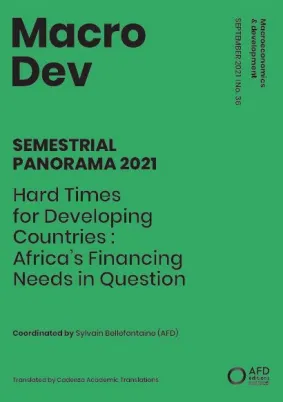
Southern Africa - 2021-2025 Regional Strategy
Based in Johannesburg, AFD’s Southern African regional office covers South Africa, Angola, Botswana, Eswatini, Lesotho, Malawi, Mozambique, Namibia, Zambia and Zimbabwe. Despite its cultural, histo...
Published on

Inequalities in Healthcare Spending on Curative Services: Evidence from Zambia
Both public spending and overall spending on curative services have become more egalitarian in Zambia with the rollout of Universal Health Coverage policies across the country. New research finds that...
Published on
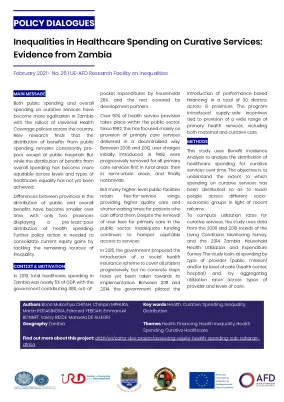
Inequalities in Maternal Healthcare Spending: Evidence from Zambia
Public and overall health spending on institutional delivery services are more egalitarian as policies targeting universal maternal care are being rolled out in Zambia. While the distribution of benef...
Published on
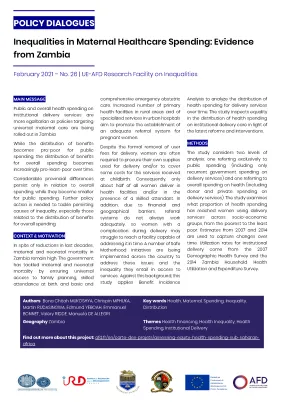
Distributional Effects of Healthcare Spending: Lessons from Burkina Faso, Malawi, and Zambia
The distribution of both public healthcare spending and overall healthcare spending has become increasingly egalitarian in Burkina Faso, Malawi, and Zambia, according to a new study. Nevertheless, the...
Published on
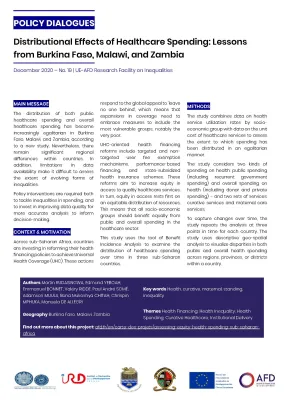
Assessing Inequalities in Healthcare Spending in Burkina Faso, Malawi, and Zambia: Data and Methods
A new study examines the distributional incidence of healthcare spending in three countries in sub-Saharan Africa. Understanding the techniques used to conduct the analysis will help key decisions on...
Published on

Estimating the distributional incidence of healthcare spending on maternal health services in Sub-Saharan Afri...
Improving access to maternal health services is a critical policy concern, especially in Sub-Saharan Africa (SSA) where maternal mortality rates remain very high, particularly so among the poorest seg...
Published on
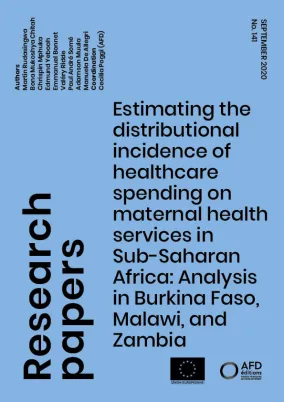
Estimating the distributional incidence of healthcare spending on curative health services in Sub-Saharan Afri...
Sub-Saharan African countries have been experiencing a persistently high level of inequality in access to healthcare services. Following the global call to eliminate health inequalities worldwide, dif...
Published on

Zambia: Resource-rich but vulnerable to shocks
Zambia, located in the north of Southern Africa and home to fewer than 18 million people, has built its development model on the abundance of natural, mainly mineral, resources. The country ranks as A...
Published on
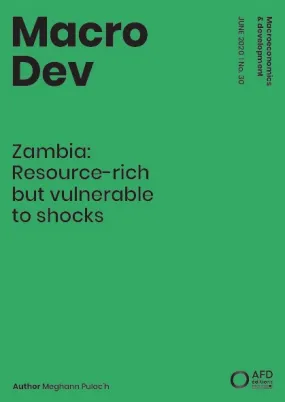
Zambia: Clear as the province copperbelt water
The Copperbelt Province, Northern Zambia, is the second most populous province in the country with some 2 million inhabitants, 60% of which live in underserved urban areas where access to drinking wat...
Published on
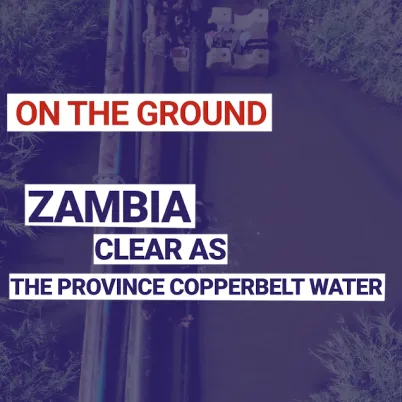
AFD and Southern Africa
The Johannesburg-based regional office for Southern Africa covers AFD’s activities in Angola, Botswana, Lesotho, Mozambique, Malawi, Namibia, South Africa, Swaziland, Zambia and Zimbabwe. AFD’s par...
Published on
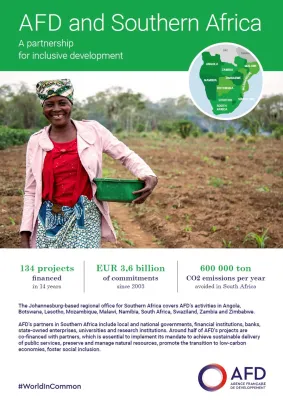
Southern Africa: Energy transition
Southern Africa has access to a wealth of primary renewable energy sources, with enough geothermal, hydro, wind and solar resources to provide gigawatts of power. However, the adoption of low-carbon t...
Published on
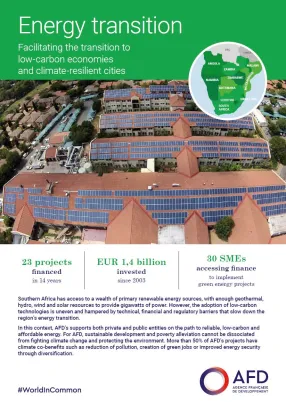
Southern Africa: Biodiversity
Southern Africa has a rich natural heritage of global significance to the world’s climate and biological diversity. Unfortunately, the capacity of nature to maintain this biological wealth is rapidly...
Published on
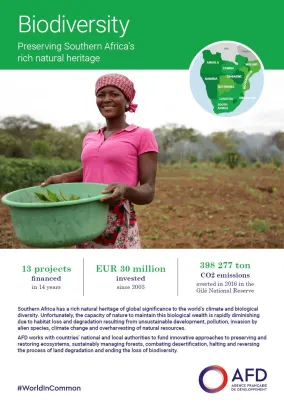
Southern Africa: Infrastructure
Southern Africa has some of the most developed infrastructure in the continent. However, the region still faces numerous challenges, such as insufficient energy supply, highly priced and unpredictable...
Published on

Southern Africa: Research and development
Research is a fundamental first step toward designing successful development projects, as it gives important insights into the political, socio-economic and environmental context in which projects wil...
Published on
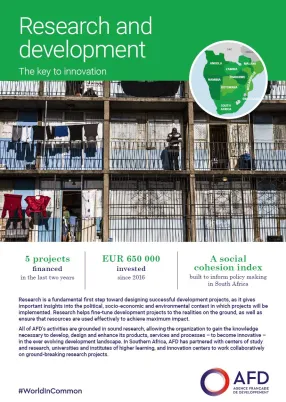
Southern Africa: Social inclusion
Access to education, healthcare, decent housing and employment are fundamental to human dignity, and are key to achieve poverty eradication. In Southern Africa, although poverty rates fell by almost h...
Published on
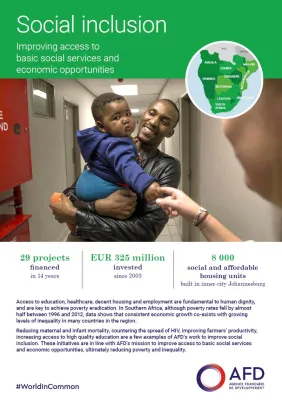
Developing Lower Secondary Education: a Rural Issue and Challenge for Sub-Saharan Africa
The current development of African education systems focuses on the perspective of universal completion of six years of schooling. This perspective, targeted by the international community for the yea...
Published on

